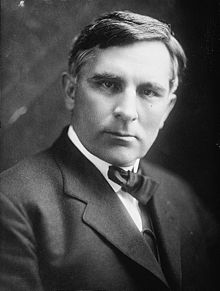
The 93rd United States Congress was a meeting of the legislative branch of the United States federal government, composed of the United States Senate and the United States House of Representatives. It met in Washington, D.C., from January 3, 1973, to January 3, 1975, during the last 18 months of Richard Nixon's presidency, and the first 6 months of Gerald Ford's. This Congress was the first Congress with more than two Senate presidents. After the resignation of Spiro Agnew, Gerald Ford was appointed under the authority of the newly ratified Twenty-fifth Amendment to the United States Constitution. Ford became president the next year and Nelson Rockefeller was appointed in his place. The apportionment of seats in the House of Representatives was based on the 1970 United States census. Both chambers had a Democratic majority.

The United States District Court for the Western District of North Carolina is a federal district court which covers the western third of North Carolina.

The 69th United States Congress was a meeting of the legislative branch of the United States federal government, consisting of the United States Senate and the United States House of Representatives. It met in Washington, D.C. from March 4, 1925, to March 4, 1927, during the third and fourth years of Calvin Coolidge's presidency. The apportionment of seats in the House of Representatives was based on the 1910 United States census.

The 55th United States Congress was a meeting of the legislative branch of the United States federal government, composed of the United States Senate and the United States House of Representatives. It met in Washington, D.C., from March 4, 1897, to March 4, 1899, during the first two years of William McKinley's presidency. The apportionment of seats in the House of Representatives was based on the 1890 United States census. Both chambers had a Republican majority. There was one African-American member, George Henry White, a Republican from the state of North Carolina, and one Kaw member, Charles Curtis, a Republican from Kansas.

The 46th United States Congress was a meeting of the legislative branch of the United States federal government, consisting of the United States Senate and the United States House of Representatives. It met in Washington, D.C. from March 4, 1879, to March 4, 1881, during the last two years of Rutherford Hayes's presidency.

The 47th United States Congress was a meeting of the legislative branch of the United States federal government, consisting of the United States Senate and the United States House of Representatives. It met in Washington, D.C. from March 4, 1881, to March 4, 1883, during the six months of James Garfield's presidency, and the first year and a half of Chester Arthur's presidency. The apportionment of seats in this House of Representatives was based on the 1870 United States census. The House had a Republican majority; the Senate was evenly divided for the first time ever, with no vice president to break ties for most of this term.
More than 1,500 African American officeholders served during the Reconstruction era (1865–1877) and in the years after Reconstruction before white supremacy, disenfranchisement, and the Democratic Party fully reasserted control in Southern states. Historian Canter Brown Jr. noted that in some states, such as Florida, the highest number of African Americans were elected or appointed to offices after the end of Reconstruction in 1877. The following is a partial list of notable African American officeholders from the end of the Civil War until before 1900. Dates listed are the year that a term states or the range of years served if multiple terms.

The speaker of the North Carolina House of Representatives is the presiding officer of one of the houses of the North Carolina General Assembly. The speaker is elected by the members of the house when they first convene for their regular session, which is currently in January of each odd-numbered year. Perhaps the most important duty of the speaker is to appoint members and chairs of the various standing committees of the House.

The North Carolina General Assembly of 2005–06 was the legislature that was elected on November 2, 2004, by voters in North Carolina. Members of the House of Representatives and Senate met in Raleigh, North Carolina, in 2005 and 2006. These were the first elections for the state legislature under a new redistricting plan approved in 2003. This General Assembly will perhaps be best remembered as the assembly that approved North Carolina's first state lottery. It also approved new ethics laws for government officials and increased the state's minimum wage.

The North Carolina General Assembly of 2007–08 consisted of the North Carolina House of Representatives and the North Carolina Senate that met in Raleigh, North Carolina, in 2007 and 2008. Members of the House and Senate were elected on November 7, 2006. This legislature first convened in January 2007. In addition to its regular sessions, the legislature met in special session in March 2008 to consider expelling Representative Thomas E. Wright.

The North Carolina General Assembly 2009–10 was the 149th North Carolina General Assembly. The 50 members of the North Carolina Senate and 120 members of the North Carolina House of Representatives were elected on November 6, 2008. It first convened in January 2009.
The 6th North Carolina Infantry Regiment was organized on June 16, 1861, at Camp Alamance with the officers being installed the following day. It was mustered in Raleigh and ended a handful of months later on the 14th of November, 1861, being later re-organized as the 16th NC. The men were from Jackson County, Madison County, Yancey County, Buncombe County, Rutherford County, Burke County, Macon County, Henderson County, Polk County, Haywood County, and Gaston County.












